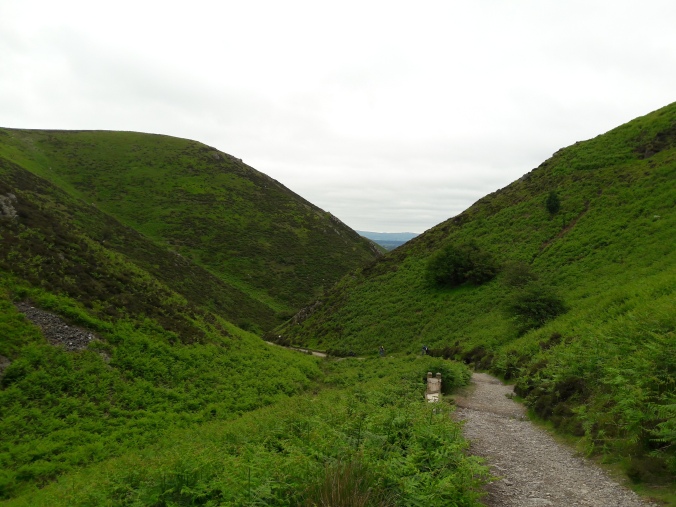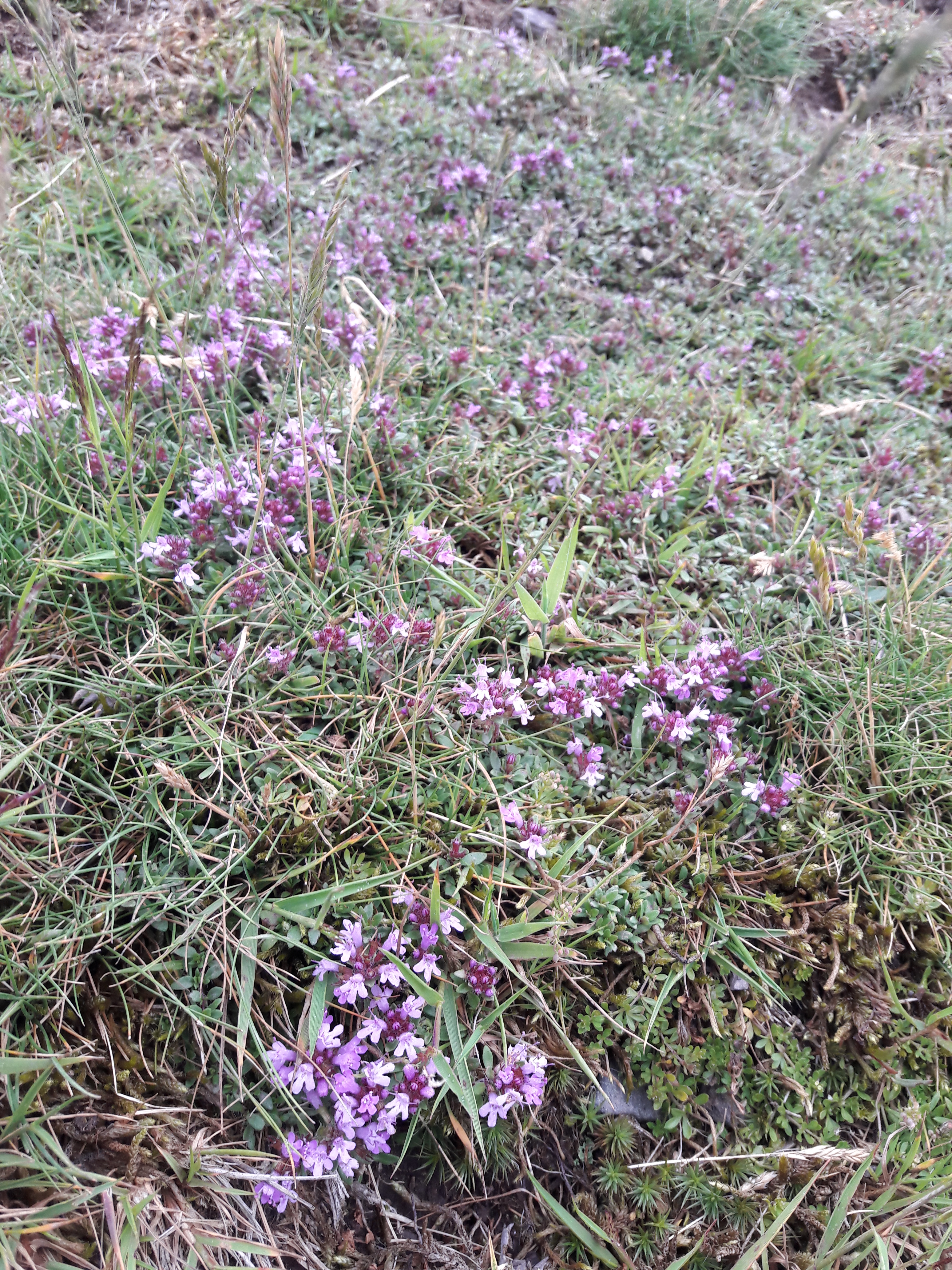If we could speed up time so centuries became mere fractions of a second we would reveal the hectic chaos in the seemingly immoveable world around us. Mountains would rise and fall, volcanoes flare and fall silent, oceans advance and recede and rivers carve through the rock like a knife through butter.

Take the Shropshire hills for example. Some 560-570 million years ago they started their lives on the edge of a continent floating just north of antarctic waters. Here pressures of collision caused volcanoes to sprew out ash and lava, the remnants of which form hills such as the Wrekin today. At the same time other parts of the land which would one day form the Shropshire hills lay still and calm beneath the sea, clays and sands being layered upon it. Rivers and deltas added thicker sand deposits and great conglomerates of gravels. Fast forward and the land slips and tilts, folding along faults which still cause the odd earthquake today. Sedimentary and volcanic rocks are all folded to sit tight beside one another.
Further forwards and the land has moved north for life in the tropics. Here heavy rains erode the rocks, and even corals find their place amongst the stones. Further north still and a series of Ice Ages batter the hills again and again, with only their highest points remaining above the thick sheets of ice. Between the freeze came the thaw and large quantities of water and sediment poured out of the ice sheets, scouring the valleys and filling the lowest points with thick layers of sands and gravels. The hills, as we see them today are formed.
Standing at the top of the Longmynd, one of the most famous hills within the Shropshire Hills Area of Outstanding Natural Beauty, listening to the skylarks chatter overhead and watching the peaceful landscape below, you could never imagine these hills budging an inch. Yet geology doesn’t rest, moving ever on. Even today these hills are slowly dissolving into the landscape from which they came. The volcanoes, the ice sheets and the tropical seas are already long gone. What seems so vast to us is merely the footprint left behind by far greater processes and millions of years of shifting sands. Somehow it makes you feel like an ant, living on a sand bank, with no idea that the rains are starting up in the hills.

The Shropshire Hills Area of Outstanding Natural Beauty was one of the first of today’s 48 AONBs to be created, way back in 1958. The hills cover roughly a quarter of the county of Shropshire and resemble a rather smaller version of the lake district fells. Sat on the border with Wales they have a history of skirmishes which has given rise to the presence of many a hillfort and castle, most now no more than lumps and bumps across the landscape. Down in the valleys historic towns and villages are peppered with quaint cottages and wonderful wooden beamed building, lilting to one side or the other. Up in the hills the landscape is covered in purple heather, yellow gorses, miniature wildflowers and many an interesting bird or mammal. Add the dramatic views over the surrounding hills and the wide plains below, and together it makes for a very picturesque and easily accessible spot for all kinds of activities.
For our first exploration we decided to head to Church Stretton and head up the Cardingmill Valley along the Long Mynd. A tourist hotspot, partly due to the Natural Trust cafe and car park, it is an easy spot to start for many different walks along the hills and valleys. We had decided on the most popular route, a 5-6 mile circular jaunt taking in some of the highlights of the route.

Starting steeply, other tourists trudging ahead and behind, we soon began to gain the views for which the area is famous. Only just over 500m tall the Long Mynd isn’t a hard hill to climb, but its position allows for panoramic views of the landscape below. Much of the hills are covered in heathers and grasses, a consequence of decades of heavy grazing by sheep. Amongst the long stems of the grasses small blue milkworts, yellow hawkbits and starry white bedstraws clamour for attention from the passing feet. Only a few stunted trees have avoided the nibbling teeth of the sheep, fluffy beige and white creatures which shed their wool on old forgotten signs and fence posts. These remaining trees are knarley, twisted and dwarfed, looking like life has been a struggle from the start. Still they have a beauty of their own, adding height to the miniture world around them.
Up high the world changes. The walk flattens and the heather swamps the dark peaty ground. We were too early for the heather bloom this time but I imagine August must be a sea of purple, with only the green fronds of bracken poking above.

From here you can see the rugged top of other hills, those whose past started in the belly of a volcano, rather than on the floor of a shallow sea. The rocks of the Long Mynd would be rich in fossils were it not that they originated so long ago that life had barely got going, at least not life that readily left fossils. The occassional jellyfish is about the most exciting to pop up in these stones. Still you don’t always need living creatures to leave interesting impressions. Apparently one of the most famous rock formations to appear from this area shows the tiny craters left behind by an ancient downpour. To look at it you can almost hear the first tentative drops hitting a the dry dusty ground.
Birdsong surrounded us, from the inane chatter of the rising skylarks, to the steady falling stutter of the meadow pippet. As we descended into the valley willow warbers called out their song, whilst chaffinches chirruped away their least melodious call. A red bellied stonechat sat and watched us from his perch, his call like two pebbles being clashed together.
Finally we returned to the valley below, with its streams and ponds. There’s still much more I would like to explore in the Shropshire hills. I often think it a shame that we spend so much time thinking only of our national parks as the countries sole highlights. After all whilst the lake district is beautiful so are the Shropshire Hills, and there’s many highlights in our wider countryside just as worth exploring as those in our parks. And once you know all the effort that went into making them how can you not come to enjoy the stillness of the now, before the rocks once more begin to move?
Very good written post. It will be helpful to anybody who usess it, including yours truly :
). Keep up the good work – can’r wait to read more posts. https://rdroyalspit.wordpress.com/2017/12/20/welcome/
LikeLike
I’m glad you enjoyed the post and found it useful. It’s a beautiful area to write about
LikeLike